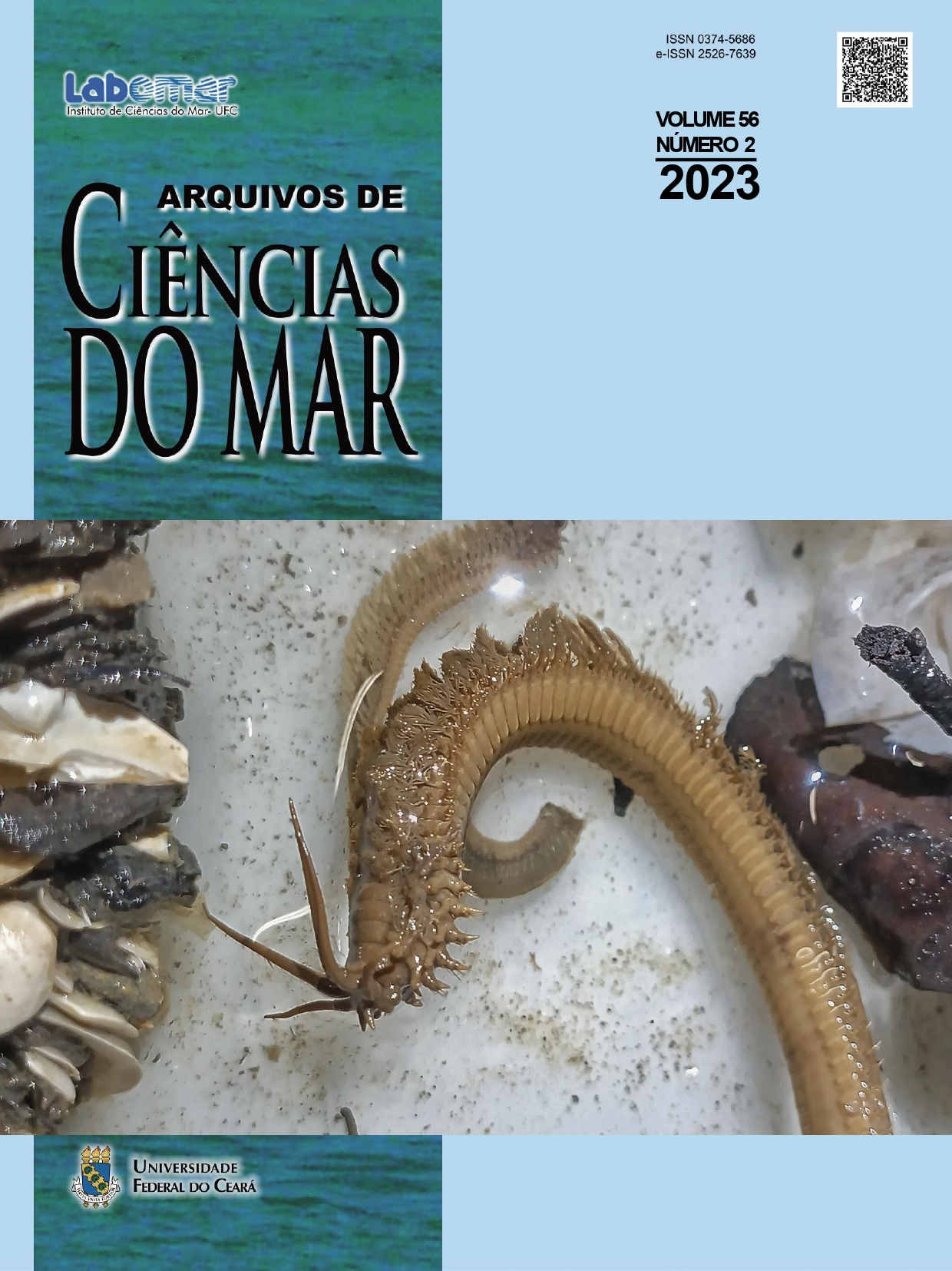VULNERABILITY OH FISHES CAUGHT BY TRAP FISHING IN NORTHEASTERN – BRAZIL
Vulnerabilidade de peixes à pesca com armadilhas no Nordeste do Brasil
DOI:
https://doi.org/10.32360/acmar.v56i2.71309Resumen
In Northeastern Brazil, the trap fishing occurs mainly in rocky bottoms and a high diversity of fishes is caught. These characteristics, associated with the growing fishing effort, threat the maintenance of the biodiversity of these environments, since this fishing is not monitored, as a result of the deficiency in public management in monitoring small-scale fishing and in promoting research
projects aimed at this objective. Due to the lack of detailed information on trap fisheries, this exploitation is prone to be assessed for impacts using semi-quantitative methods, built for data-poor situations. Our objective was to estimate the degree of vulnerability to trap fishing for the captured species through productivity-susceptibility analysis (PSA), based on data observed during fisheries
monitoring and data obtained from the literature. Thus, it was possible to generate the necessary information to assist in the elaboration of management policies for this fishery in Northeastern Brazil. The Haemulidae family was the most abundant among the captured individuals, with Haemulon aurolineatum representing 29.7% of the sample. The PSA indicated that, although all species have
high productivity, Pseudopeneus maculatus, Lutjanus synagris and Haemulon plumierii were the most
vulnerable species, respectively. Furthermore, from 2000 to 2010 the trap fishing was directed to the P. maculatus; however, we verified a change in the target species, due to the biomass reduction of P. maculatus in the area. Therefore, it seems necessary to reassess this species building a management plan since they were classified by IUCN Red List as Least Concern – LC and according to results of the current study may not be the case anymore.
Keywords: Data-Poor; Fishing effort; Spotted goatfish
Descargas
Publicado
Número
Sección
Licencia
Derechos de autor 2023 Arquivos de Ciências do Mar

Esta obra está bajo una licencia internacional Creative Commons Atribución 4.0.
1. Proposta de Política para Periódicos de Acesso Livre
Autores que publicam nesta revista concordam com os seguintes termos:
- Autores mantém os direitos autorais e concedem à revista o direito de primeira publicação, com o trabalho simultaneamente licenciado sob a Licença Creative Commons Attribution que permite o compartilhamento do trabalho com reconhecimento da autoria e publicação inicial nesta revista.
- Autores têm autorização para assumir contratos adicionais separadamente, para distribuição não-exclusiva da versão do trabalho publicada nesta revista (ex.: publicar em repositório institucional ou como capítulo de livro), com reconhecimento de autoria e publicação inicial nesta revista.
- Autores têm permissão e são estimulados a publicar e distribuir seu trabalho online (ex.: em repositórios institucionais ou na sua página pessoal) a qualquer ponto antes ou durante o processo editorial, já que isso pode gerar alterações produtivas, bem como aumentar o impacto e a citação do trabalho publicado (Veja O Efeito do Acesso Livre).

